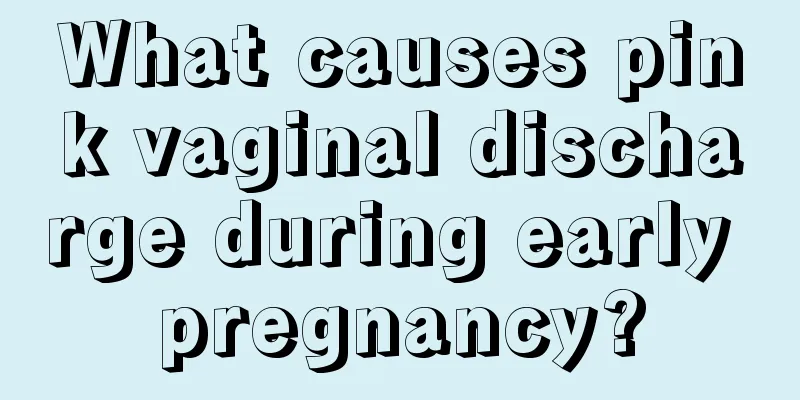40 days pregnant, stomach pain but no bleeding

|
If you have abdominal pain for 40 days during pregnancy but no spotting, it may be that the gestational sac embryo has implanted in the wrong place, the abdominal pain may be caused by ectopic pregnancy, the abdominal pain may be caused by threatened abortion, or it may be due to indigestion caused by a weak digestive tract during pregnancy, which can also cause abdominal pain. If this happens, it is recommended to go to the hospital for examination in time, perform ultrasound examination, understand the size of the gestational sac and the location of embryo implantation, and understand whether there is bleeding near the gestational sac, uterine fluid accumulation or other symptoms, such as pelvic fluid accumulation, etc. According to the results of the examination, timely and appropriate tocolytic treatment should be given. If it is an intrauterine pregnancy and there is fluid accumulation in the uterine cavity but no bleeding, it is also a sign of miscarriage. It is recommended to recheck the progesterone level, blood HCG and estradiol. If the progesterone value is relatively low, progesterone copper should be taken orally and timely pregnancy-preserving treatment should be given. During the pregnancy-preserving period, the couple should refrain from sexual intercourse, reduce activity, and go to the hospital for examination. In clinical medicine, the occurrence of pregnancy spotting before the onset of labor is a relatively reliable sign of labor for most pregnant women. However, there is also a small number of patients who are not likely to experience pregnancy spotting before the onset of labor. Most of them will have it, but there are also a very small number of patients who are not likely to have it, so this is also normal. If you experience abdominal pain at 40 weeks, you should first go to the hospital for fetal heart monitoring to check the condition of uterine contraction. If there are regular contractions every 5-10 minutes, each lasting about 40 seconds, you should examine the vagina to see if the cervical canal is shortened or the cervical opening is enlarged. If uterine contractions occur, you feel abdominal pain, and the cervical canal is shortened and the cervical opening is dilated, you should be hospitalized for labor treatment. Labor can be initiated even if no bleeding is seen. If regular uterine contractions occur, you should be hospitalized. Some people just can't see any bleeding. |
<<: Late pregnancy feeling weak
>>: Drinking lemon water suddenly stopped morning sickness
Recommend
How to treat fallopian tube obstruction with enema?
Only by ensuring that women's fallopian tubes...
Will menstruation suddenly stop coming?
We all know that every normal woman will have men...
Does scraping have any effect on pregnancy?
Gua Sha can help the body's blood circulation...
How to make Arctic shrimp dumplings? Can Arctic shrimp be used to make shrimp dumplings?
The global annual catch of Arctic shrimp is about...
How to see women’s health from menstruation? One look and you'll know
Menstruation is one of the normal physiological p...
Menopausal weakness
For women, once they enter menopause, not only wi...
How to use peanut butter? How to eat peanut butter after it solidifies
Peanut butter is mainly made from high-quality pe...
Pelvic Endometriosis Stage 1
When a woman goes to the hospital for a physical ...
Dietary treatment for mastitis
"Can I use diet therapy to treat mastitis? W...
Why can't Satsuma mandarin be sold? How is the market for Satsuma mandarin this year?
The sales volume of sugar oranges is not very hig...
Does anterior pelvic tilt affect fertility?
The reasons that affect fertility include: for me...
What causes no follicles?
The egg is composed of an oocyte in the ovarian c...
How to recover from sudden milk shortage?
During the breastfeeding process, you must mainta...
Is it good to have only the head sweating when practicing Tai Chi? What should I do if only the head sweats when practicing Tai Chi?
Tai Chi, a world-class intangible cultural herita...









![[Medical Q&A] What effects does decreased estrogen have on women’s health?](/upload/images/67f0e34df00bb.webp)